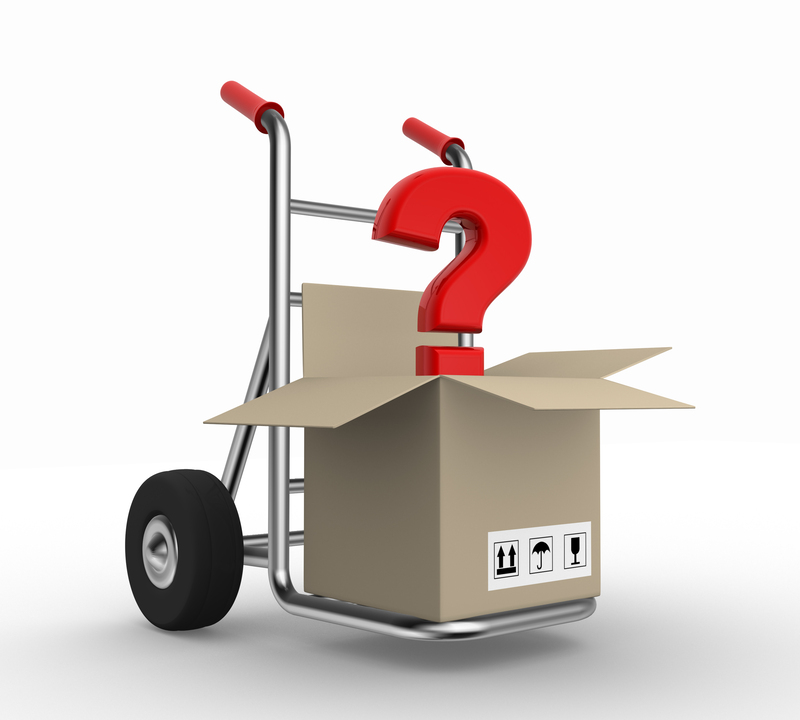Understanding the challenges of DIY piano relocation projects
Posted on 11/06/2025
Understanding the Challenges of DIY Piano Relocation Projects
If you're considering moving a piano by yourself, you're not alone. Many people have attempted DIY piano relocation projects to save money or as a personal challenge. However, while it might seem straightforward at first glance, the reality is that piano moving is a complex, risky, and labor-intensive endeavor. Understanding the obstacles and risks associated with DIY piano moving is crucial before embarking on such a project.

Why Is Piano Relocation So Difficult?
Pianos are not your average piece of furniture. They're large, heavy, and delicately constructed instruments. Their unique combination of size, shape, and fragility makes relocating a piano far more complicated than moving a couch or table. Let's explore some reasons why:
- Sheer Weight: Grand pianos can weigh upwards of 1,000 pounds, while upright pianos regularly exceed 400 pounds.
- Delicate Construction: Pianos consist of thousands of parts, many of which are easily damaged by jostling, moisture, or incorrect handling.
- Irregular Shape: Their size, center of gravity, and lack of easy grip points make maneuvering pianos a unique logistical problem.
- Unpredictable Obstacles: Stairs, narrow doorways, and uneven surfaces can quickly make a seemingly simple move hazardous.
Key Challenges of DIY Piano Moves
1. Physical Strain and Personal Injury Risk
Perhaps the most immediate concern in a DIY piano relocation project is physical safety. Pianos aren't just heavy--they're unwieldy. Lifting improperly, losing your grip, or being unprepared for the instrument's weight can all lead to:
- Back injuries from improper lifting techniques or overexertion.
- Crushed fingers or feet if the piano shifts or falls.
- Muscle strains, sprains, and even bone fractures in more severe mishaps.
Beyond your personal safety, consider the risk to helpers or bystanders. One wrong move could result in serious harm.
2. Protecting the Piano from Damage
A piano is both an instrument and an investment, sometimes with sentimental or monetary value. Improper handling during a DIY move can lead to:
- Scratches, dents, and chips to the wood or finish.
- Broken legs or pedals if the piano is dropped or knocked against a hard surface.
- Internal damage to delicate mechanisms, strings, or soundboards, potentially ruining the instrument's tone and playability.
Such damage often exceeds the cost you would have paid for professional movers, making DIY piano relocation a risky gamble.
3. Navigating Stairs, Doorways, and Tight Spaces
Most homes aren't designed for moving pianos. DIY relocators regularly encounter:
- Narrow doorways that require precise angling and maneuvering.
- Steep or winding staircases that demand extra hands and careful balance.
- Thresholds, carpets, and uneven floors offering unexpected resistance or tripping hazards.
Each of these obstacles increases the risk to both the movers and the instrument, especially for those without professional experience.
4. Lack of Specialized Equipment
Professional piano movers rely on a range of specialized tools, including:
- Piano dollies and skid boards for safe transport.
- Moving straps for secure, even lifting.
- Padded blankets and stretch wrap to prevent scratches and impact damage.
- Ramps and stair climbing devices for navigating steps.
Most homeowners don't have these items on hand, and improvising often leads to accidents or damage during self-move piano relocation.
5. Transport and Securing the Piano in a Vehicle
Moving a piano out of your house is only half the challenge. Getting it into a truck and securely transporting it adds further complications:
- Vehicle appropriateness: Not all rental trucks can accommodate a large piano, especially grand pianos.
- Securing the load: Pianos must be firmly anchored to prevent shifting during transit.
- Shock and vibration: Even minor bumps or potholes can damage a piano that isn't properly protected.
Common Mistakes During DIY Piano Moves
Those attempting do-it-yourself piano moving for the first time are prone to errors that professionals know how to avoid. Some frequent mistakes include:
- Ignoring Preparation: Failing to measure doorways, stairwells, and hallways in advance.
- Underestimating the Manpower: Assuming two people are enough, when many pianos require four or more strong movers.
- Poor Wrapping: Using inadequate padding, leaving the piano exposed to scratches and dents.
- Improper Lifting Techniques: Trying to lift with the back, not the legs, or unevenly distributing the piano's weight.
- Not Detaching Removable Parts: Attempting to move the piano with legs or pedals attached, increasing the chance they'll snap.
- Lack of Insurance: Failing to confirm coverage for potential instrument or property damage.
Why Professional Piano Movers Have the Upper Hand
Professional piano movers bring more than just muscle--they offer:
- Experience: They've dealt with nearly every layout, obstacle, and piano style imaginable.
- Correct Equipment: From heavy-duty dollies to custom-sized padding and vehicle tie-downs.
- Insurance: Most reputable moving companies offer insurance for the move, safeguarding your investment against accidents.
- Efficiency: They can complete the move with less risk and hassle, leaving you stress-free.
Real-Life Scenarios: Stories of DIY Piano Moving Challenges
Case Study 1: The Basement Spiral Staircase
A family living in an older home decided to move their upright piano from their basement music room up to the living room. They quickly discovered that the spiral staircase, narrow and awkward, was far beyond their capabilities. The move stalled partway, and the piano became wedged between the banister and the wall--ultimately requiring damage to the railing and hiring professionals to finish the job.
Case Study 2: Grand Piano and the Pickup Truck
A group of friends attempted to move a grand piano using a basic pickup truck and some packing blankets. While negotiating a sharp turn, the lack of proper tie-downs caused the piano to rock and slip--leading to a cracked soundboard and thousands of dollars in repairs. The cost far exceeded the price of hiring a local piano moving specialist.
How to Prepare If You Still Want to Attempt a DIY Piano Relocation Project
Despite the risks, some determined individuals will still try to move their own pianos. If you're set on undertaking a DIY piano relocation, careful planning is critical. Here's how to mitigate risks:
1. Assemble the Right Team
- Four strong adults minimum, preferably with experience in heavy lifting.
- Assign clear roles--leader, spotters, lifters, and coordinators at each end of the instrument.
2. Gather Equipment
- Piano dolly or skid board: Don't try to carry the piano without rolling assistance.
- Heavy-duty straps for lifting and stabilizing.
- Plenty of furniture blankets and padding to protect both the piano and your home.
- Work gloves to improve grip and safety.
- Measuring tape to ensure the piano will fit through all passageways.
3. Plan Your Route Meticulously
- Measure all doorways, stairs, and tight spots before starting.
- Clear pathways to avoid tripping hazards.
- Have a backup plan if initial routes prove impossible.
4. Secure the Piano for Transit
- Disassemble removable parts like legs, music stands, and pedals if possible.
- Wrap the piano securely to prevent any incidental scratches or dings.
- Load the piano carefully into the vehicle, ensuring it's upright and tied down on all sides.
- Avoid sharp turns and sudden stops during transport.
5. Check Your Insurance
- Confirm your homeowners' or renters' insurance policy covers damage during a move.
- Consider temporary moving insurance if your instrument is of high value.
When Should You Call a Professional Piano Mover?
Even with thorough planning, some moves are simply beyond the reach of most DIYers:
- You own a grand or baby grand piano (vs. a spinet or compact upright).
- Stairs or tight turns cannot be avoided.
- Your piano is valuable, vintage, or has sentimental value you can't replace.
- The climate or move distance involves additional risks (e.g., extreme heat, humidity, or long distances).
In these cases, hiring a team of professional piano movers is not just a precaution--it's the best way to protect both your instrument and your property.

Conclusion: Think Twice Before Attempting a DIY Piano Move
While the idea of a do-it-yourself piano relocation may seem attractive in terms of cost savings, the challenges and risks are significant. The blend of physical danger, risk to the piano, and potential property damage makes DIY piano moving projects an endeavor best approached with caution or left to the professionals.
If you value your health, your time, and your cherished instrument, investing in experienced piano movers is the wise choice. For those determined to tackle the project on their own, thorough preparation, the right equipment, and an honest assessment of your capabilities are essential to a safe and successful move. Ultimately, understanding the challenges of moving a piano yourself can help you make an informed, responsible decision that safeguards both your instrument and your home.
Frequently Asked Questions: DIY Piano Relocation Projects
- How much does a professional piano move cost?
Costs vary by distance, type of piano, and obstacles involved, but usually range from $150 to over $1,000 for complex moves. - Can I move an upright piano by myself?
While smaller uprights are less challenging, solo moves are risky, and at least 3-4 strong people are still recommended for safety. - What's the most common damage during self-move piano relocation?
Scratches, broken legs/pedals, and internal component damage are frequent in DIY piano moves. - How do I minimize risk during a DIY piano move?
Use proper equipment, plan routes, enlist sufficient help, and never cut corners on safety.
If you're still unsure whether to tackle a DIY piano relocation project, consult with professional piano movers in your area for an expert opinion--and peace of mind.
```


